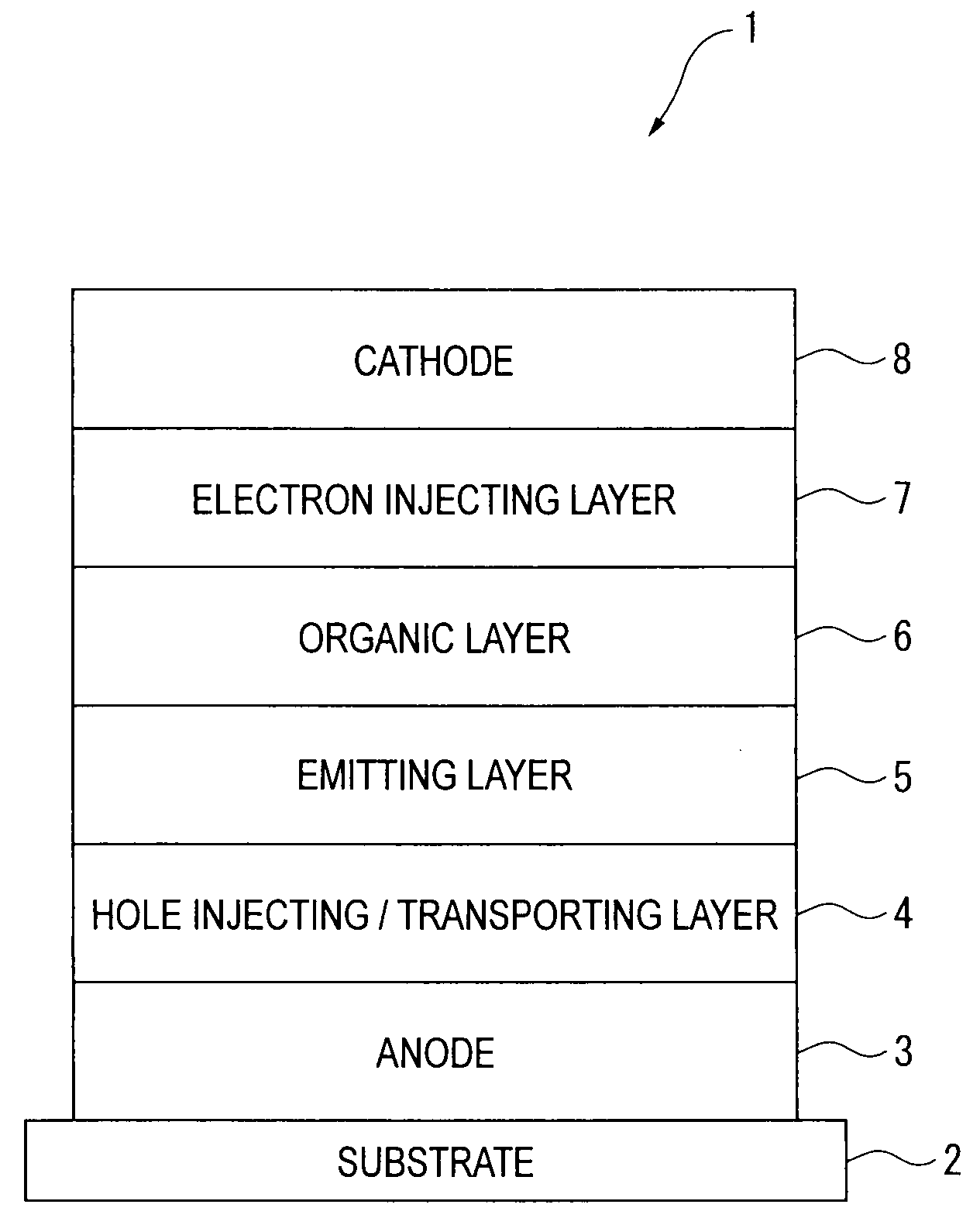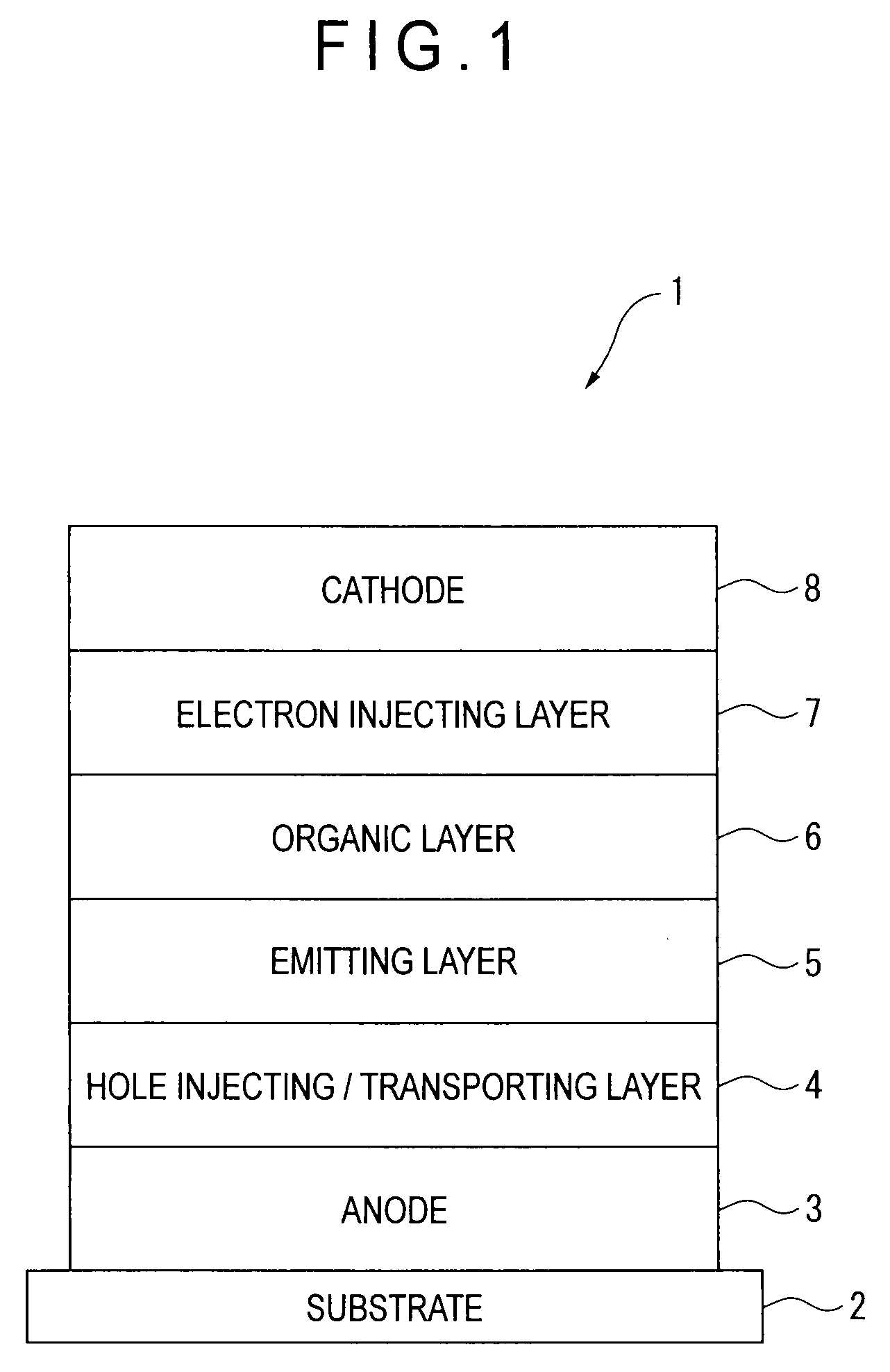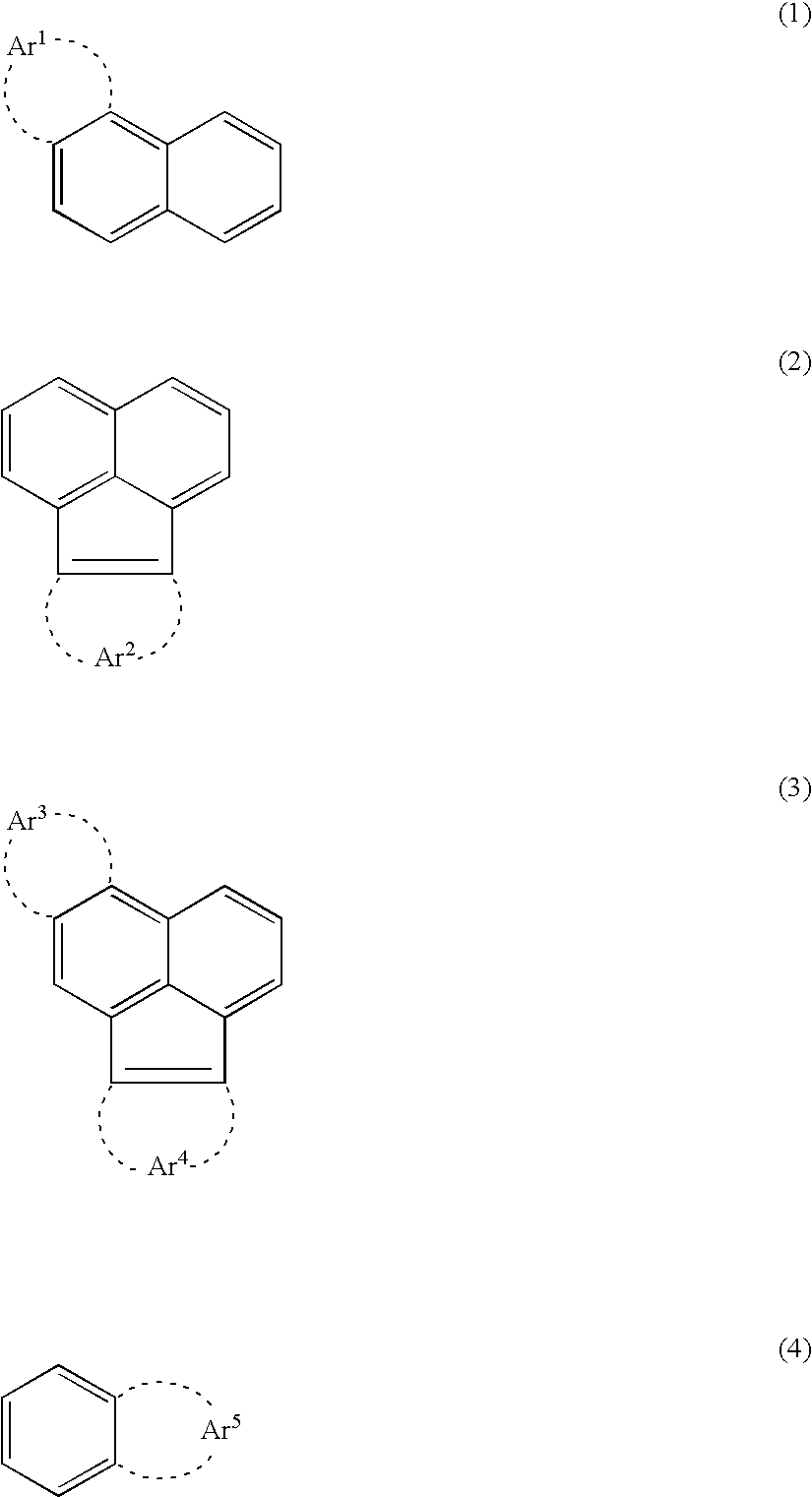Organic electroluminescence device and organic-electroluminescence-material-containing solution
- Summary
- Abstract
- Description
- Claims
- Application Information
AI Technical Summary
Benefits of technology
Problems solved by technology
Method used
Image
Examples
example 1
[0246]A glass substrate (size: 25 mm×75 mm×1.1 mm thick) having an ITO transparent electrode (manufactured by Geomatec Co., Ltd.) was ultrasonic-cleaned in isopropyl alcohol for five minutes, and then UV / ozone-cleaned for 30 minutes.
[0247]After the glass substrate having the transparent electrode line was cleaned, the glass substrate was mounted on a substrate holder of a vacuum deposition apparatus. Then, 50-nm thick film of 4,4′-bis[N-(1-naphthyl)-N-phenylamino]biphenyl (hereinafter abbreviated as “NPD film”) was formed initially onto a surface of the glass substrate provided with the transparent electrode line by resistance heating deposition in such a manner that the NPD film covered the transparent electrode. The NPD film served as the hole injecting / transporting layer.
[0248]Then, an emitting layer was formed on the NPD film. The following compound (H1), which was used as the phosphorescent host, was formed into 40-nm thick film by resistance heating deposition. At the same tim...
example 2
[0252]Except that the following compound (H3) was used as the organic layer, the organic EL device according to the Example 2 was manufactured in the same manner as the Example 1.
[Comparative 1]
[0253]Except that Balq (bis-(2-methyl-8-quinolinolate)-4-(phenylphenolate) aluminum) was used as the organic layer, the organic EL device according to the Comparative I was manufactured in the same manner as the Example 1.
[Evaluation of Organic EL Device]
[0254]The organic EL devices each manufactured as described above were driven by direct-current electricity of 1 mA / cm2 to emit light, so that emission chromaticity and voltage were measured. In addition, by conducting a direct-current continuous current test with the initial luminance intensity being set at 5000 cd / m2 for each organic EL device, time elapsed until the initial luminance intensity was reduced to the half (i.e., time until half-life) was measured for each organic EL device.
[0255]The results of the evaluation are shown in Table ...
example 3
[0259]A glass substrate (size: 25 mm×75 mm×1.1 mm thick) having an ITO transparent electrode (manufactured by Geomatec Co., Ltd.) was ultrasonic-cleaned in isopropyl alcohol for five minutes, and then UV / ozone-cleaned for 30 minutes.
[0260]After the glass substrate having the transparent electrode line was cleaned, the glass substrate was mounted on of a substrate holder of a vacuum deposition apparatus. Then, 50-nm thick film of 4,4′-bis[N-(1-naphthyl)-N-phenylamino]biphenyl (hereinafter abbreviated as “NPD film”) was initially formed by resistance heating deposition onto a surface of the glass substrate where the transparent electrode line was provided in a manner of covering the transparent electrode. The NPD film served as the hole injecting / transporting layer.
[0261]Then, an emitting layer was formed on the NPD film. The compound (H1) was formed into 20-nm thick film by resistance heating deposition. At the same time, the compound (D1), which was used as the phosphorescent emitti...
PUM
 Login to View More
Login to View More Abstract
Description
Claims
Application Information
 Login to View More
Login to View More - R&D
- Intellectual Property
- Life Sciences
- Materials
- Tech Scout
- Unparalleled Data Quality
- Higher Quality Content
- 60% Fewer Hallucinations
Browse by: Latest US Patents, China's latest patents, Technical Efficacy Thesaurus, Application Domain, Technology Topic, Popular Technical Reports.
© 2025 PatSnap. All rights reserved.Legal|Privacy policy|Modern Slavery Act Transparency Statement|Sitemap|About US| Contact US: help@patsnap.com



